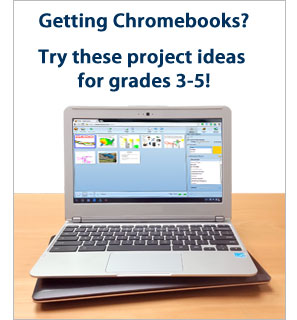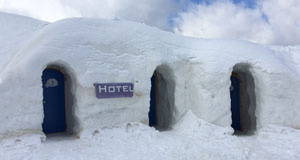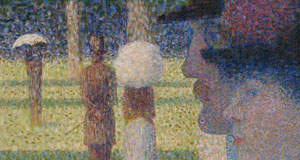School Rules
Students work together to determine and propose a new school rule.
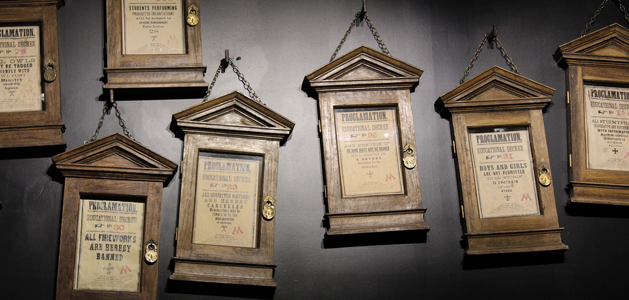
Task
We often complain about all the rules. But imagine if there weren't any rules? We wouldn't be safe and life would be chaos!
In this project, students work together to propose a new school rule to showcase knowledge of government structures, apply civic virtues, and demonstrate an understanding of the importance and effect of rules (laws).
Engage
Most kids dislike at least one school rule and often think a rule isn't fair. Talk to your students about rules and laws. Take advantage of the information in your Social Studies textbook or resources like "Why Do We Have Rules?" from Wonderpolis or a video like this.
To get them thinking about the importance of rules (and laws), challenge them to explain why they think a particular rule is bad or unfair. As a class, work together to see if it can be modified or changed to make it more effective or more fair.
Revisit the three branches of government using your textbook or other materials. Work together to compare the national government structure with the government at your school.
Students are likely to see the Principal in a similar role as the President or the head of an executive branch that carries out the rules of the school. But students aren't likely to understand how the rules are made in the first place or the range of people involved in the judicial process at school.
Invite your Principal or AP into your classroom to answer student questions and explain:
- where existing rules are found.
- how rules are made and who makes them.
- how evidence is evaluated.
Create
Now that students have learned about rules and laws, it's time to take action. What rule would your students like to change? What new rule would they like to see enacted in their classroom or school?
You could form small teams around a shared rule idea or form teams first and have students generate an idea together as they discuss problems they see at school. If students need ideas, have them survey schoolmates about current school problems or rules they don't like.
If they are still having problems, encourage your students to complain! They can usually come up with a long list of "problems" or things they don't like. Once they have a list, challenge them to develop a rule that might help fix the problem.
Once they have their idea, student teams should develop a draft, much like a bill is a draft of a law. Have them share this bill with another team or rotate through all ideas as a class. While it takes longer to review as a class, cross-pollination can push all teams to think more deeply and widely.

After feedback, teams should edit their draft so they are ready to have it approved by student council or administration. To be ready to showcase their law, ask the teams to prepare a presentation to describe:
- the problem
- the law
- how the law fixes the problem
- why it is necessary
Developing this presentation will also help them reflect on the process and develop a stronger argument to support implementation of their idea.
Share
Have student teams present their new rules to the rest of the class. Listen to each presentation and ask students to share their thoughts on each rule. You can use a warm and cool feedback organizer to prompt their thinking.
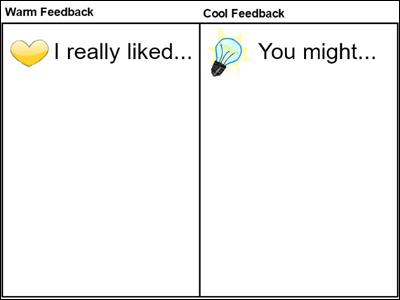
Download a Warm and Cool Feedback sheet page
As an exit ticket, ask students to choose their favorite new rule and include an explanation as to why it is the most important one.
If this was a new rule for your class, select from the top three favorites (backed up by a solid argument) and have the students vote to make one of them into a new classroom law.
If your goal was a new rule for school, you could have student teams present to the principal and administration or to a student council. You could also have the entire class select their favorite, or most important, new rule and edit it so the entire class can present it to site administrators.
Assessment
As you begin to engage students in the legislative process, assess their prior knowledge of the branches of government and their different roles in establishing, evaluating, and enforcing laws.
If you work to compare the national government of the United States with school administration, you will be able to more deeply evaluate student understanding and identify misconceptions.
The quality of the rule and the writing of its details will largely reflect social-emotional maturity and academic skills. So, if you are evaluating student work, be sure to establish clear expectations for performance.
After students have presented their ideas to administration (whether teacher, principal, or student body leadership), have them reflect on the process to further cement their understanding.
Resources
Hope Goins. The Adventures of Chloe and Chris: The Three Branches of Government ISBN: 1737834561
Jessica Pegis. Why Do We Need Rules and Laws? ISBN: 0778726045
Wonderopolis - Why do we have rules?
Ben's Guide - What are branches of Government?
Scholastic - Civics and Election 2020
Standards
C3 Standards for Social Studies - Grade 3
Dimension 2: Civic and Political Institutions
1. Distinguish the responsibilities and powers of government officials at various levels and branches of government and in differenttimes and places.
2. Explain how a democracy relies on people's responsible participation, and draw implications for how individuals should participate.
4. Explain how groups of people make rules to create responsibilities and protect freedoms.
6. Describe ways in which people benefit from and are challenged by working together, including through government, workplaces, voluntary organizations, and families.
7. Apply civic virtues and democratic principles in school settings.
9. Use deliberative processes when making decisions or reaching judgments as a group.
10. Identify the beliefs, experiences, perspectives, and values that underlie their own and others' points of view about civic issues.
11. Compare procedures for making decisions in a variety of settings, including classroom, school, government, and/or society.
12. Explain how rules and laws change society and how people change rules and laws.
13. Explain how policies are developed to address public problems.
Common Core State Standards for English Language Arts - Grade 3
CCSS.ELA-LITERACY.W.3.1
Write opinion pieces on topics or texts, supporting a point of view with reasons.
CCSS.ELA-LITERACY.W.3.2
Write informative/explanatory texts to examine a topic and convey ideas and information clearly.
CCSS.ELA-LITERACY.W.3.4
With guidance and support from adults, produce writing in which the development and organization are appropriate to task and purpose.
CCSS.ELA-LITERACY.W.3.5
With guidance and support from peers and adults, develop and strengthen writing as needed by planning, revising, and editing.
CCSS.ELA-LITERACY.W.3.6
With guidance and support from adults, use technology to produce and publish writing (using keyboarding skills) as well as to interact and collaborate with others.
ISTE Standards for Students
6. Creative Communicator
Students communicate clearly and express themselves creatively for a variety of purposes using the platforms, tools, styles, formats and digital media appropriate to their goals. Students:
a. choose the appropriate platforms and tools for meeting the desired objectives of their creation or communication.
d. publish or present content that customizes the message and medium for their intended audiences.



